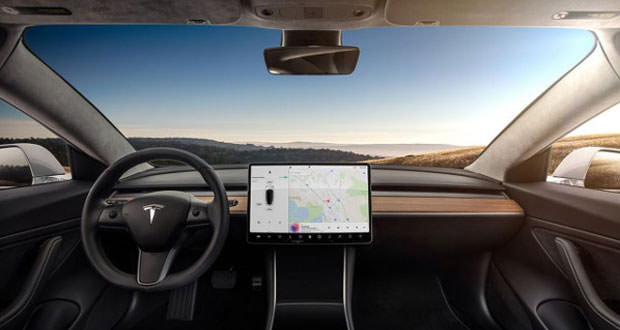Tesla: The most advanced computer for autonomous driving with Autopilot 3
Tesla has started talking about the new hardware that will be at the base of third-generation Autopilot. For the first-time, Tesla employs its proprietary chip, without using NVIDIA technology.
The California automaker claims that the Autopilot 3 autonomous driving system will be powered by the ” the most advanced computer for autonomous driving ” at that time available. With these words, he wants to imply that his hardware will be more powerful than the current hardware provided by NVIDIA. This will be introduced in existing vehicles with an upgrade without additional costs for the current owners, starting next year.
The collaboration between Tesla and exponents of the technology world starts in 2016 with the assumption of Jim Keller, veteran chip industry already an employee of AMD. At Keller’s assumption, there followed those of other engineers from AMD, who would be part of Tesla’s program to develop a proprietary hardware solution for the management of artificial intelligence.
Keller later left Tesla, with the AI chip development team headed by Pete Bannon, who had landed in Tesla in the second wave of AMD arrivals. During the conference on the sidelines of the group’s financial results yesterday, Bannon announced that the work on the chip has come to an end and that this is already present on the experimental cars circulating on the roads on which the autonomous driving tests are authorized.
Bannon said the new chip will be released along with a ” hardware 3 ” suite for Autopilot that will replace existing computers in vehicles with Autopilot 2.0 and 2.5, whose production began in October 2016, according to Musk. Tesla chip is significantly higher than the solutions on the market today that Tesla can acquire under license.
The current Autopilot system is based on the NVIDIA Drive platform, capable of processing up to 200 frames per second. According to Musk, instead, Tesla ” hardware 3 ” will be able to manage 2 thousand frames per second with redundancy.
This goal was achieved by building the chip from the foundations, conceiving it as an ” accelerator of the neural network ” that Tesla’s AI team has recently built and trained.
Bannon and Musk reiterated that the new computer will be offered as an upgrade to vehicle owners with Autopilot 2.0 (and later) simply replacing the current computer. The update will be free for current Tesla owners, also because the Californian company has in the past advertised Autopilot 2.0 as a completely autonomous driving system, a goal that can only be achieved with the new hardware. Meanwhile, Tesla will continue to improve the current Autopilot system with the release of version 9 of its software within the next 4 weeks.
Tesla announced long ago that its agreement with NVIDIA would have expired and be working on the development of proprietary autonomous driving technology. A move in some ways predictable: considering the huge investments on its latest projects it is understandable that Tesla wants to develop in-house such an important component as the ” heart ” of artificial intelligence.

